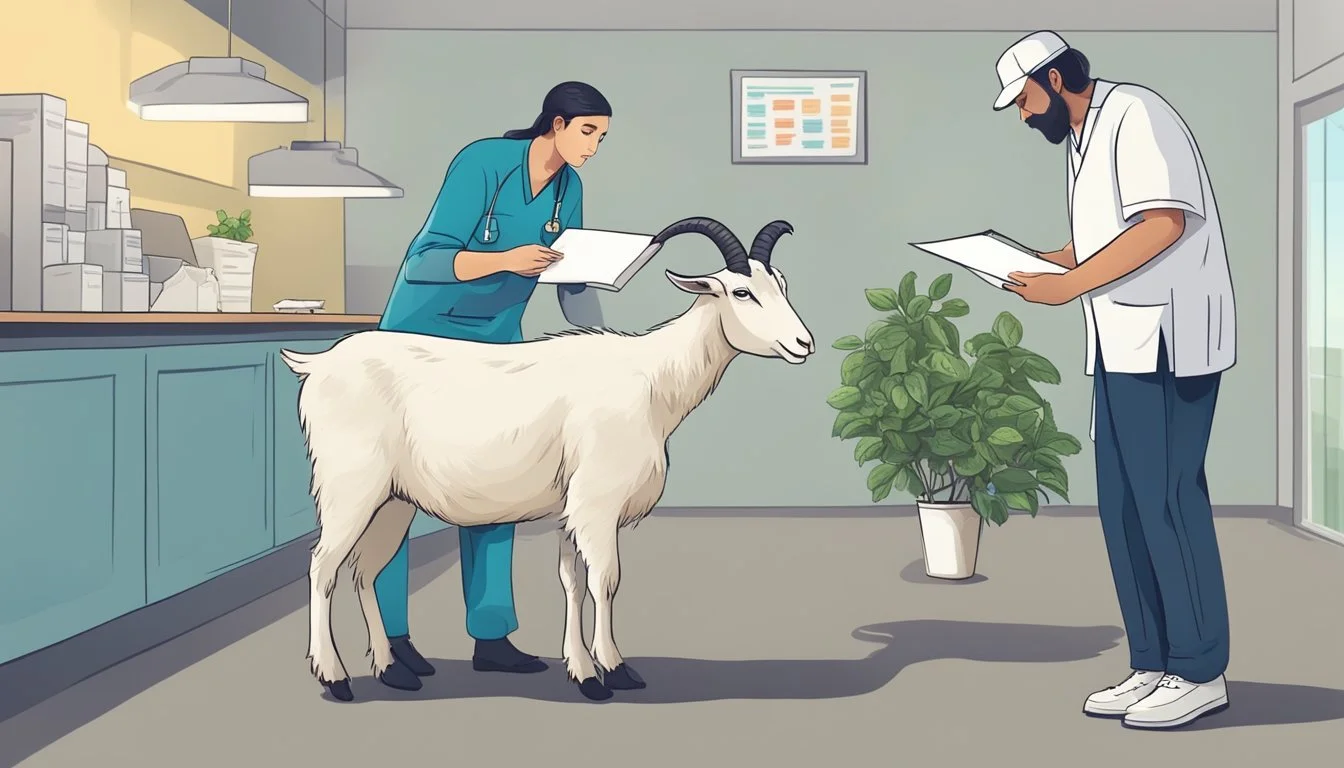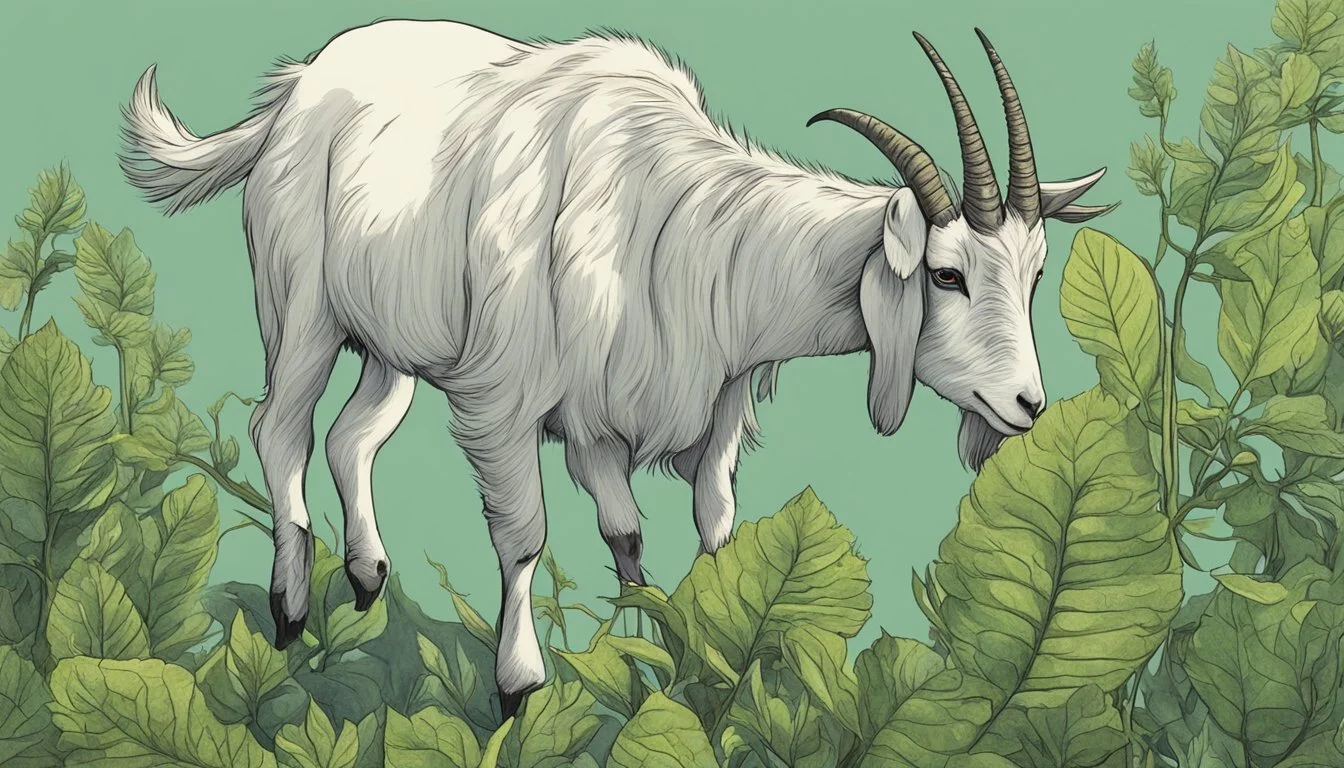What Should I Do If My Goat Eats Something Poisonous?
Immediate Steps for Safety and Health
Goats are naturally curious animals with a strong appetite for a variety of plants, which sometimes leads them to consume toxic substances. The health risks associated with poisoning can range from mild discomfort to life-threatening conditions. Goat owners should be vigilant in preventing access to known poisonous plants and be prepared to act swiftly if they suspect their goat has ingested something harmful.
Immediate action is crucial if a goat has eaten something toxic. Knowing the common symptoms of goat poisoning, such as depression, loss of appetite, incoordination, and jaundice, enables prompt recognition and response. Removing any remnants of the toxic substance from the goat's mouth and providing supportive care can help mitigate the effects while seeking veterinary assistance.
Often, the first indicator of a toxin ingestion by goats is adverse changes in their behavior or physical condition. Goat keepers should consistently monitor their animals and be familiar with the symptoms of toxicity. In cases where goats have been poisoned, having a plan that includes immediate interventions and veterinary contact can be lifesaving. It's advisable to keep a first aid kit and emergency contact numbers readily accessible at all times.
Recognizing Poisoning in Goats
Quick and accurate recognition of poisoning in goats is crucial as it can be the difference between life and death. This section outlines how to identify the common symptoms of toxicity, understand the various types of toxicities that can affect goats, recognize poisonous plants and substances, comprehend specific risks by plant type, and be aware of toxicity risks from garden and household items.
Identifying Common Symptoms
Goats showing signs of poisoning may exhibit a range of symptoms. Be vigilant for:
Vomiting and diarrhea: These are often immediate responses to ingestion of toxic substances.
Pain: A goat in distress might grind its teeth, kick at its belly, or be reluctant to move.
Lack of coordination: Also known as ataxia, which may manifest as stumbling or an unsteady gait.
Neurological symptoms: Including arrhythmia, seizures, or intermittent shaking.
Changes in behavior: Such as sluggishness, lack of appetite, excessive coughing, or sneezing.
Understanding Types of Toxicity
Two main types of toxicity affect goats:
Hemolytic anemia: Resulting from the destruction of red blood cells, often visible through pale mucous membranes or jaundiced eyes.
Kidney damage: Indicated by changes in urination patterns or the color of urine.
Poisonous Plants and Substances
Be aware of poisonous plants such as yew, oleander, rhododendron, laurel, and azalea. Other toxic plants to goats include larkspur, poison hemlock, water hemlock, and ragwort. Ingestion of castor beans, chocolate, onions, and garlic can also lead to poisoning.
Specific Risks by Plant Type
Certain plants pose specific risks:
Cherry, wild cherry, and plum trees: Leaves and seeds contain cyanide, especially when wilted.
Ponderosa pine, bracken fern, and lantana: Known to cause hemolytic anemia in goats.
Delphinium and boxwood: Can cause both neurological and gastrointestinal symptoms.
Toxicity from Garden and Household Items
Beyond plants, other toxins include:
Garden clippings: Can be harmful if they contain any of the poisonous plants listed above.
Houseplants: Many common houseplants are toxic to goats.
Fences and barn paint: Ensure any paint or stain used is livestock-friendly to prevent ingestion of harmful chemicals.
Human food: Such as leftover kale, potato peels, rhubarb, or any type of chocolate, which should be kept out of reach.
Immediate Response to Poisoning
When a goat ingests a poisonous substance, immediate action is essential to mitigate the effects. Timely first aid measures can be the difference between a full recovery and a grave outcome.
First Aid Measures
Secure the Goat: Relocate the goat to a safe, enclosed space away from any poisonous materials. Removing further access to the toxin is a priority to prevent additional ingestion.
Identify the Poison: If possible, identify what the goat has ingested. This information is crucial and will assist the veterinarian in formulating an appropriate response plan.
Examine the Goat: Check for any remnants of the toxic substance in the mouth. Gently remove any parts of the plant or substance if it is safe to do so without risking injury to yourself or the goat.
Administer First Aid:
Water: Provide clean water to the goat to prevent dehydration.
Activated Charcoal: It may be recommended to administer activated charcoal, as it can absorb some toxins and help in their removal from the body.
Baking Soda & Milk of Magnesia: These substances can neutralize some ingested poisons. Baking soda can help in cases of acidosis, while milk of magnesia acts as a laxative to help expel the poison.
Remember, incorrect treatments may worsen the condition. These remedies should be used under the guidance of a veterinarian.
Consult a Veterinarian: Immediate consultation with a veterinarian is crucial. They may suggest additional treatments such as administration of specific antidotes, IV fluids, or further supportive care.
Monitor the Goat: Observe the goat closely after initial first aid steps have been taken. Watch for any changes in behavior or symptoms and report these to the veterinarian, as they are key indicators of the goat's response to the treatment.
Keep Records: Document what the goat ingested, the quantity (if known), the first aid measures performed, and the goat's response. This will be important information for the veterinarian and any ongoing care.
The success of treating a poisoned goat often depends on the speed and accuracy of the response. Taking swift action by applying these first aid measures might help the goat recover more effectively.
Seeking Professional Help
Immediate action and consultation with a veterinarian are critical when a goat consumes a potentially toxic substance. Swift access to professional health care can significantly increase the chances of recovery and provide the necessary treatments prescribed by the vet.
When to Call a Vet
One should call a vet immediately if there are signs that a goat has ingested poison. Symptoms of poisoning in goats can include but are not limited to difficulty breathing, weakness, a sudden change in behavior, or gastrointestinal distress. These symptoms often require urgent medical attention. It is important to note that some signs of poisoning might be subtle and not immediately apparent, underscoring the importance of timely veterinary intervention.
If the goat has ingested plants known to be toxic, such as yew or azaleas, contact with the vet should occur without waiting for symptoms to develop. Certain chemical poisons can also lead to severe health problems and will need professional treatment, including possible prescription medications to address specific toxic effects.
The vet may administer treatments such as activated charcoal to bind toxins, intravenous fluids to help flush poisons from the body, and antidotes if available for the specific toxin ingested. Veterinarians can also provide supportive care to maintain the goat's vital functions during recovery.
In cases of suspected poisoning, one should not wait to see if symptoms will improve or worsen. Early treatment is often associated with better outcomes. When calling the vet, be prepared to describe what the goat has eaten, how much, and when, as this information is critical for determining the appropriate course of action.
Long-Term Treatment and Management
After emergency treatment for a goat that has ingested something poisonous, long-term care and management are critical to ensure full recovery and prevent further health complications. This involves ongoing monitoring, possibly adjustments in nutrition, and supportive care to bolster the goat's health.
Ongoing Care and Monitoring
The long-term management of a goat that has survived poisoning primarily focuses on monitoring health signs and preventing any potential relapse or secondary complications. Veterinarians may recommend specific treatment regimens, which could include the administration of fluids to maintain hydration and proper electrolyte balance.
Fluids: Continual access to clean, fresh water and potentially an electrolyte replacement solution as advised by the veterinarian.
Nutrition: A carefully balanced diet that meets all the nutritional needs of the goat. This may involve easily digestible feeds and the introduction of supplements to support healing.
Supplements: Depending on the toxin ingested, a goat may require certain supplements to aid in the detoxification process. These may include activated charcoal to bind toxins in cases of continued exposure, or specific supplements such as vitamins or minerals that support liver and kidney function.
Probiotics: Probiotics can help to stabilize the rumen environment and promote the growth of beneficial bacteria, aiding digestion and overall health.
Ongoing care should be under the guidance of a veterinarian. Frequent check-ups to assess the goat's health status might be necessary, with adjustments in the care plan based on the goat's progress. Caretakers need to observe their goat for any signs of distress, changes in eating habits, or abnormal behavior.
Careful management of the goat's environment is also vital to prevent re-exposure to toxic substances. This includes maintaining a clean living space, ensuring that feeds are free from contaminants and poisonous plants, and securing fencing to prevent the goat from accessing hazardous areas.
Consistency in providing a supportive environment and adhering to the long-term care plan is essential for the health and well-being of a goat recovering from poisoning.
Preventative Strategies for Goat Safety
To ensure the well-being of goats, it's essential to implement proactive management strategies. This includes managing pastures, removing hazards, providing adequate nutrition, and conducting regular health checks.
Pasture and Feed Management
Proper management of pastures is crucial to prevent goats from ingesting toxic plants. Goats should graze in areas free of known poisonous plants for goats, such as rhododendron and azalea. Regularly inspect pastures for the emergence of toxic plants, particularly after a drought, as these conditions can promote the growth of unwanted vegetation. It's also vital to provide high-quality hay and forages to discourage goats from eating harmful plants due to a lack of better options.
Eliminating Toxic Plants and Hazards
Goat owners should systematically inspect their land and remove any plants that are toxic. Plants such as lily of the valley, oleander, and yew should be identified and eradicated. In addition to plants, other hazardous materials like leftover garden chemicals or sharp objects near feeding areas must be cleared to prevent accidental ingestion. Secure fencing is also necessary to prevent goats from accessing areas with potential hazards.
Supplemental Nutrition and Health Checks
Nutrition plays a pivotal role in the health of goats. Offering a balanced diet with essential supplements can help stave off diseases and conditions like bloat and mastitis. Goats require mineral supplements, especially copper, to prevent vulnerability to parasites. Regular health checks, including monitoring for signs of poisoning such as changes in water consumption or refusal to eat, are also critical for early detection and response to potential issues.
Understanding Poison-Related Diseases and Conditions
In managing goat health, it is imperative to recognize that various diseases and conditions can arise from toxic ingestions. Immediate recognition of symptoms and a solid grasp of the specific illnesses are crucial for swift and effective intervention.
Common Poison-Related Illnesses in Goats
Goats may encounter a range of poison-related diseases, which can lead to serious health issues or even prove fatal if left unaddressed. Two of the most notable illnesses include:
Enterotoxemia, commonly referred to as overeating disease, is caused by the bacteria Clostridium perfringens. Symptoms of this condition include sudden onset of lethargy, diarrhea, abdominal discomfort, and can rapidly progress to death if not treated promptly. For prevention, vaccination and proper feeding management are key.
Tetanus is a disease resulting from the toxin of Clostridium tetani bacteria. Signs that a goat might be suffering from tetanus are stiffness, muscle spasms, and difficulty eating or drinking. To avert this disease, routine vaccinations are recommended as a preventive measure.
Other conditions like mastitis, which is an inflammation of the mammary gland often related to bacterial infection, can also be observed in goats. This condition is usually identified by swelling, heat, and abnormal milk secretion. If a goat is exposed to cold or wet conditions, they might also develop pneumonia, the symptoms of which include coughing, nasal discharge, and labored breathing.
Each of these health issues requires immediate attention from a veterinarian, who can diagnose the specific problem and recommend an appropriate treatment plan. Good management practices, including regular health checks and a clean, toxic-free environment, can lower the risks associated with these conditions.
Resources for Goat Owners
For goat owners, having access to accurate and comprehensive resources is crucial when addressing the issue of goats ingesting toxic substances. These resources not only provide vital information but also education on how to prevent and respond to such incidences effectively.
Educational Materials and Extension Services
Educational Materials: An array of educational materials are available to goat owners looking to understand the risks and treatments associated with plant toxicity. Websites like The Open Sanctuary Project offer detailed guides on various plants that are harmful to goats. Additionally, educational resources such as books, fact sheets, and online articles provide insights on symptoms of poisoning and immediate steps that should be taken if a goat has ingested a potentially harmful plant.
Extension Services: Many universities and agricultural institutions run extension services that can be of great assistance to goat owners. They typically have experts in animal husbandry and veterinary science, who can offer advice and support. For instance, local extension offices often hold workshops and provide publications on goat care, including handling cases of poisoning. They might also provide access to a global toxic plant database which can help in identifying hazardous plants that may be present in a particular locality.






